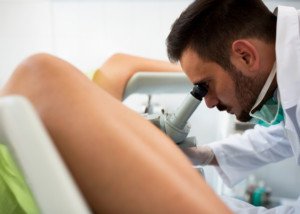![]()
If it’s possible to go from CIN 1 to CIN 3 in 90 days, why aren’t all CIN 1 cases treated with LEEP?
CIN 1 is precancer and has the potential to transform into a full-blown malignancy if left untreated. CIN stands for cervical intraepithelial neoplasm.
The key word here is “potential.” It’s not a guaranteed future malignancy.
Nevertheless, it needs serious attention — but not necessarily aggressive.
In general, Pap smears are recommended for sexually active women on a yearly basis, and women should discuss with their doctors what screening protocol is best for them, based on their personal and medical history.
Sometimes, the Pap smear reveals a degree of abnormal cell growth that’s classified as CIN1.
“CIN1 can resolve in 50 percent of cases, so conservative management in a compliant patient is usually undertaken,” says Mylaine Riobe, MD, founder of Riobe Institute of Integrative Medicine.
Dr. Riobe, who’s board certified in ob/gyn and integrative medicine, is the author of “The Answer to Cancer” and has over 15 years’ experience using integrative techniques to treat diverse patients.
“If the CIN 1 doesn’t resolve after a year, then a more definitive treatment is recommended,” continues Dr. Riobe.
“CIN is usually a slow growing process that takes several years; however, in patients with immune deficiencies such as smokers, those with HIV or other immuno-compromised states, can experience more rapid progression.
“Once CIN 1 is diagnosed, Pap smears are done every three months rather than annually.
“This increases the surveillance so that rapid progression can be detected and successfully treated.”
Why not LEEP for All CIN 1 Cases?
Dr. Riobe explains, “LEEP is an invasive surgical procedure that can lead to a condition called cervical incompetence in a small number of patients (one in 1,000).
“Cervical incompetence leads to premature vaginal deliveries often in the second trimester of pregnancy before the baby is viable.
“It’s a condition that is difficult to prevent, so it’s best to avoid a LEEP if it’s not necessary. LEEP is usually recommended for CIN 2-3 and has a 96 percent success rate and a 4 percent rate of recurrence if all the affected tissue is successfully removed.”
LEEP stands for loop electrosurgical excision procedure.

Dr. Riobe has helped thousands of patients overcome difficult illnesses by addressing root causes, not just masking symptoms. The Riobe Method focuses on the prevention of disease, not the prevention of death from disease. She has 20+ years’ experience using integrative techniques to treat diverse patients.
 Lorra Garrick has been covering medical, fitness and cybersecurity topics for many years, having written thousands of articles for print magazines and websites, including as a ghostwriter. She’s also a former ACE-certified personal trainer.
Lorra Garrick has been covering medical, fitness and cybersecurity topics for many years, having written thousands of articles for print magazines and websites, including as a ghostwriter. She’s also a former ACE-certified personal trainer.
.









































